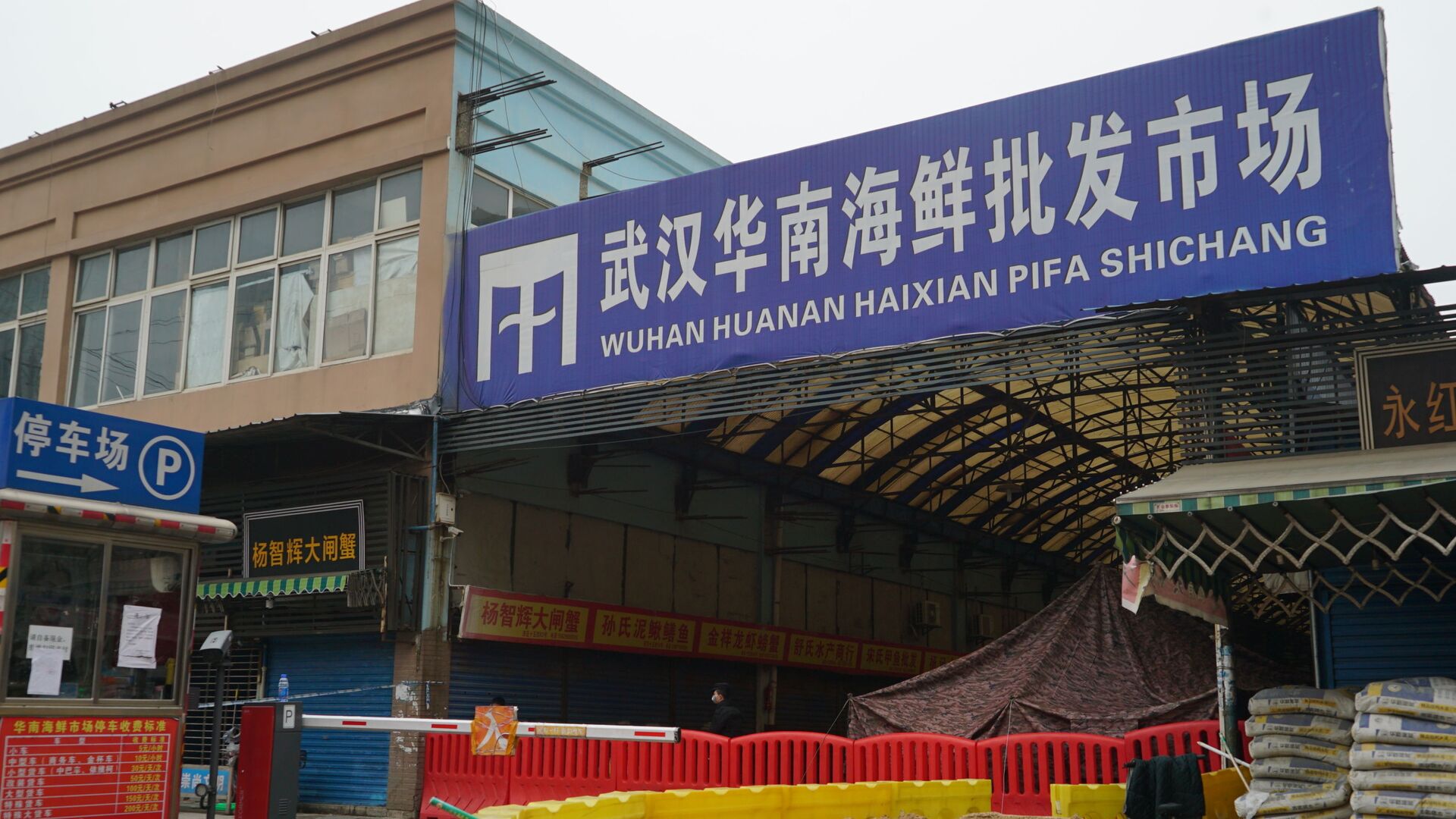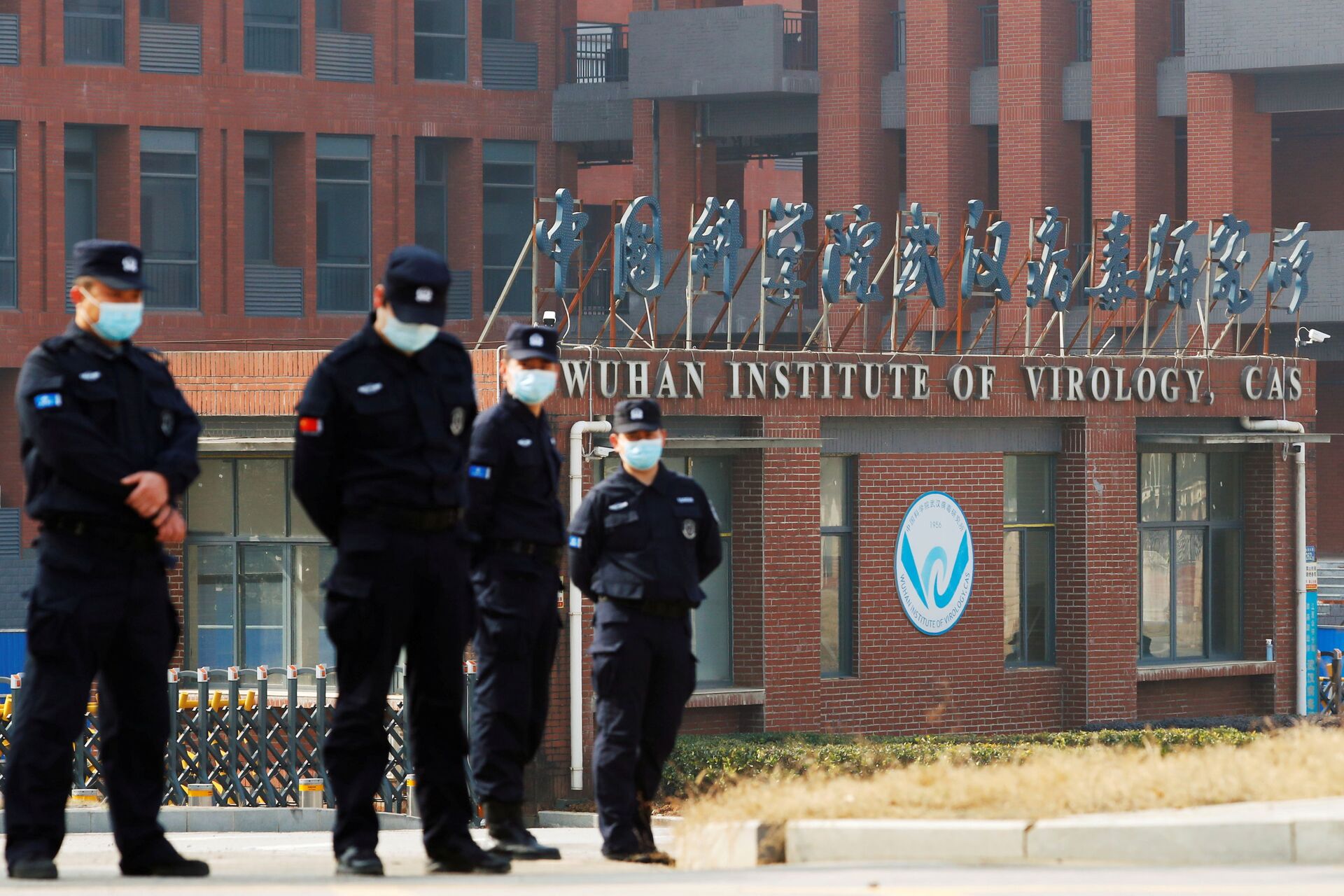Scientist Disputes WHO Report on COVID-19 Patient Zero, Says First Case Was Linked to Animal Market

© AP Photo / Dake Kang
Subscribe
Over the past two years, the world has learned a lot about SARS-CoV-2 – how it spreads and attacks a body and how to protect against it, but there is one thing scientists still haven't managed to ascertain: what is the origin of the disease that has so far killed over 5.1 million worldwide. The new study is likely to revive the debate on the issue.
A leading expert in tracing the evolution of viruses has disputed the World Health Organisation's (WHO) report on COVID-19 patient zero. In his study, published this week in the prestigious journal Science, Michael Worobey, claims that the first known case of SARS-CoV-2 was not a male accountant as mentioned in the WHO report written with Chinese scientists, but a female vendor at the Huanan Seafood Market in Wuhan, where poultry, meat, seafood, and wild animals are sold.
After analysing numerous public records and studies on COVID-19, Mr Worobey found discrepancies that he argues prove the global health watchdog was wrong in its assessment.
The WHO report released in March said that a male resident with the surname Chen developed symptoms on 8 December 2019. The accountant, who is a resident of Wuhan, had no link to the wet market, where scientists initially thought the coronavirus began infecting humans.
In his study Michael Worobey points out that a senior doctor at Wuhan Central Hospital, where Mr Chen was treated, told a Chinese news agency that he developed symptoms around 16 December.
After analysing numerous public records and studies on COVID-19, Mr Worobey found discrepancies that he argues prove the global health watchdog was wrong in its assessment.
The WHO report released in March said that a male resident with the surname Chen developed symptoms on 8 December 2019. The accountant, who is a resident of Wuhan, had no link to the wet market, where scientists initially thought the coronavirus began infecting humans.
In his study Michael Worobey points out that a senior doctor at Wuhan Central Hospital, where Mr Chen was treated, told a Chinese news agency that he developed symptoms around 16 December.
Mr Worobey then found a second new source who corroborated statements made by the Wuhan doctor. The man with the surname Chen speaking to the Shanghai-based news agency The Paper, said he developed symptoms on 16 December. The outlet's report said Mr Chen worked as an accountant and never went to the Wuhan market.
Criticism of WHO Report
The paper written by the world health watchdog has come under criticism for errors and inconsistencies. It said that the virus originated in bats then jumped to an intermediary animal (most likely a pangolin), before infecting humans. A theory that the COVID-19 outbreak started as a result of a leak from the Wuhan Institute of Virology, which has a campus eight miles away from the Huanan market, was described as "extremely unlikely".

Security personnel keep watch outside the Wuhan Institute of Virology during a visit by the World Health Organisation (WHO) team tasked with investigating the origins of the coronavirus disease (COVID-19), in Wuhan, Hubei Province, China 3 February 2021.
© REUTERS / THOMAS PETER
Two months after the report was published, 18 prominent scientists, including Mr Worobey, published a letter complaining that the WHO's investigators didn't look in depth into the lab leak theory. They argued that more research was needed. A report by The Wall Street Journal revealed that the WHO paper listed the wrong viral samples for several early COVID-19 patients, including the first known case.
Michael Worobey writes that the spread of the disease began at the Huanan market. He again cites a report from The Paper, who interviewed female vendor Wei Guixian, who said that she developed serious symptoms on 11 December.
"The most early symptomatic cases were linked to Huanan Market — specifically, the western section where raccoon dogs were caged — [providing] strong evidence of a live-animal market origin of the pandemic", the expert wrote.
Worobey also found that hospitals in Wuhan reported more than a dozen cases of a mysterious pneumonia in people before 30 December, when public health officials told hospitals to report any new cases of the enigmatic illness linked to the market.
Response From Scientists
Several researchers have commended Mr Worobey's report and agreed that the first known case was likely a female vendor at the market. Peter Daszak, a disease ecologist at EcoHealth Alliance, who was part of the group of WHO investigators, said he was convinced by Michael Worobey's analysis that their team had been wrong.
Mr Daszak revealed that the WHO team never asked Mr Chen when his symptoms began. Instead the researchers were given data by doctors from Hubei Xinhua Hospital, who handled the early cases of COVID-19, but didn't treat Mr Chen. China's National Health Commission said the researchers, who were part of the WHO investigative team, stood by the findings of the report.
This year there has been a change in attitude towards the theory that COVID-19 emerged due to a leak from the Wuhan Institute of Virology, a claim China has vehemently denied. What was previously dubbed a conspiracy theory, has become a plausible scenario. An investigation conducted by the Biden administration found that both variants – natural spillover and lab leak – are plausible, with the studies also rejecting the hypothesis that COVID-19 was developed as a biological weapon.
Alina Chan, a postdoctoral researcher at MIT's Broad Institute and one of the biggest proponents of the lab leak theory, has signalled that Michael Worobey's study barely scratched the surface.
Mr Daszak revealed that the WHO team never asked Mr Chen when his symptoms began. Instead the researchers were given data by doctors from Hubei Xinhua Hospital, who handled the early cases of COVID-19, but didn't treat Mr Chen. China's National Health Commission said the researchers, who were part of the WHO investigative team, stood by the findings of the report.
This year there has been a change in attitude towards the theory that COVID-19 emerged due to a leak from the Wuhan Institute of Virology, a claim China has vehemently denied. What was previously dubbed a conspiracy theory, has become a plausible scenario. An investigation conducted by the Biden administration found that both variants – natural spillover and lab leak – are plausible, with the studies also rejecting the hypothesis that COVID-19 was developed as a biological weapon.
Alina Chan, a postdoctoral researcher at MIT's Broad Institute and one of the biggest proponents of the lab leak theory, has signalled that Michael Worobey's study barely scratched the surface.
"This is like trying to guess the shape of an iceberg when you can only see what's above the surface. Where are the November case data? We know that by December there had been a superspreader event at the seafood market and cases numbered in the hundreds", she wrote in a statement on social media.
Ms Chan pointed out numerous media reports saying that COVID-19 was circulating in China as early November 2019.
Jesse Bloom, a virologist at the Fred Hutchinson Cancer Research Centre, said he doesn't disagree with Michael Worobey’s study, but noted he doesn't believe that "any of the data are strong enough or complete enough to say anything very confidently, other than that the Huanan Seafood Market was clearly a super-spreading event".

